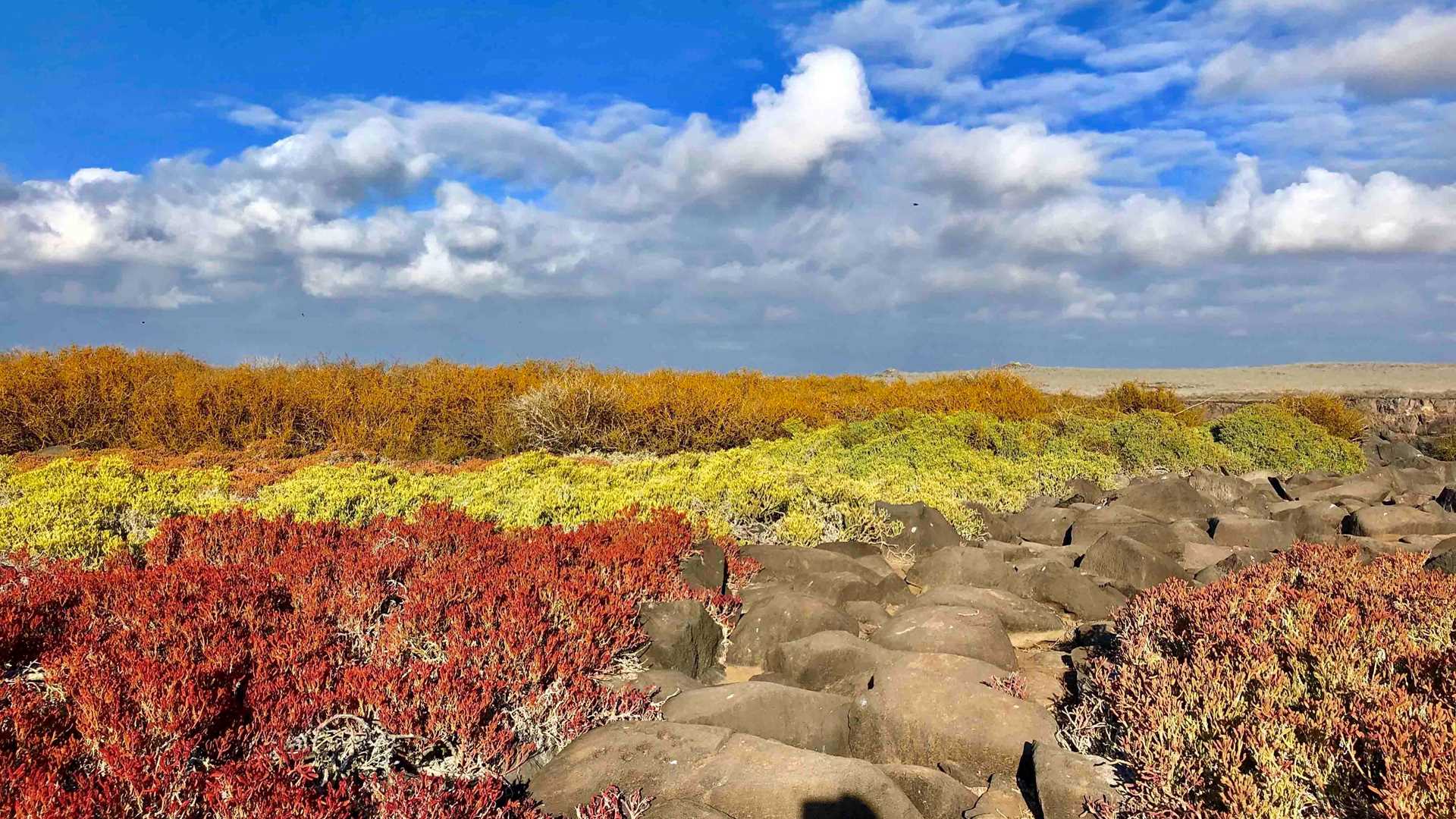After an overnight navigation, we travelled from San Cristóbal to Española Island, which is located in the southeast of the Galápagos Archipelago and is considered one of the oldest islands of the archipelago. Española is one of the highlights of the week. In the morning, we anchored at Gardner Bay, with its white, coralline sands and shallow turquoise waters, the landscape was beautiful. At the beach, there were many sunbathing Galápagos sea lions. The presence of these cute animals in contrast with its fine white sand and turquoise clear water made it feel like paradise. We also spotted the Española mockingbird, which kept us amused, as it was constantly inspecting people’s backpacks and hats.
In the afternoon, we visited another part of the island, Punta Suarez, one of the richest wildlife locations in Galapagos. As we started to walk among the lava, we could see that erosion had converted the lava flows into boulders. The strenuous walk took us to the nesting ground of the waved albatross, one of the part-time inhabitants of this place. We were lucky enough to see a few of them still on the island; we know that by the end of the year they will all be gone! The albatross is an oceanic bird that only comes to land to reproduce. Here they find the cliffs from which they can easily take off. As we continued to hike along the trail, we had a chance to spot hundreds of Nazca boobies, blue-footed boobies, frigate birds, Galapagos doves, Española mockingbirds, Española lava lizards, Galapagos sea lions, and marine iguanas. Just incredible! Images that will remain in our minds forever. This was an unforgettable day in paradise exploring with National Geographic Endeavour II.







